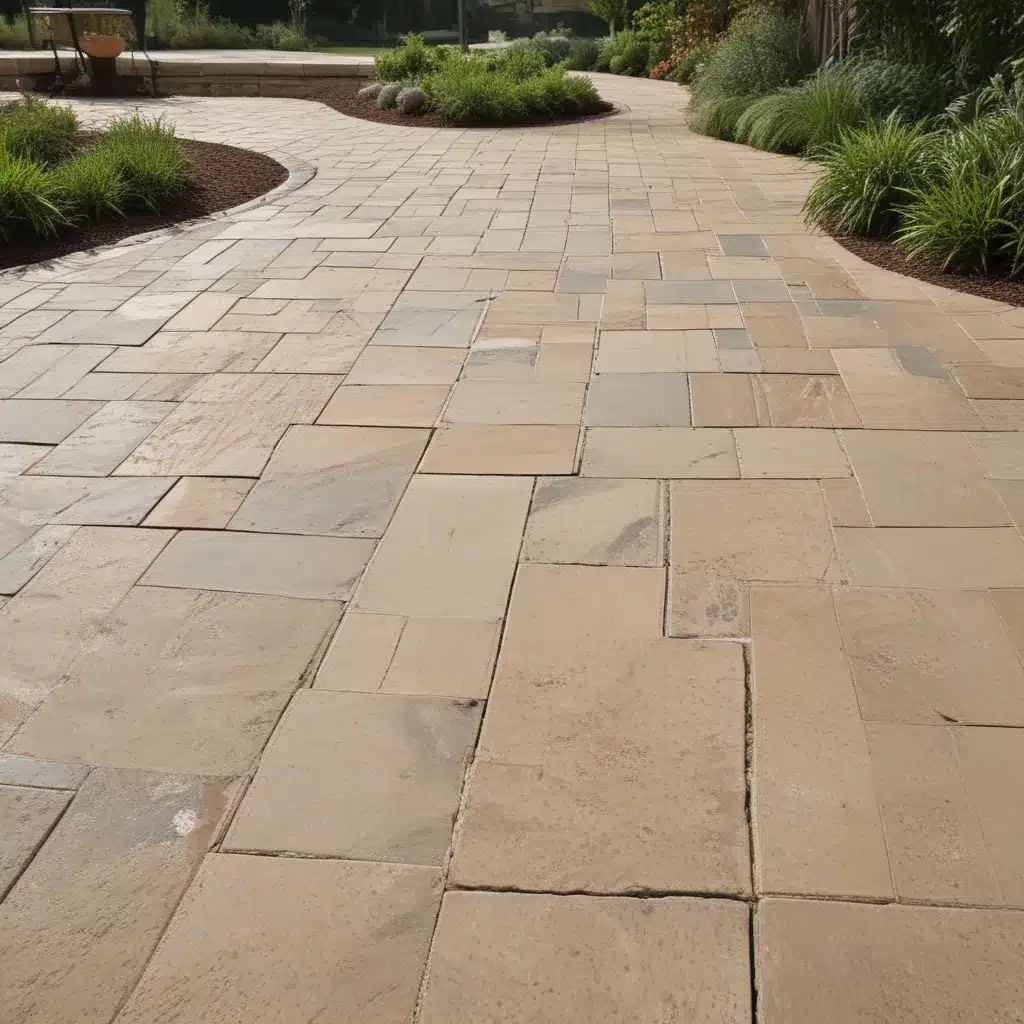
As an experienced outdoor living consultant, I have the privilege of guiding homeowners through the captivating world of patio paving, landscape design, and outdoor living spaces. In this comprehensive article, we’ll delve into the nuances of material choices, design trends, installation techniques, and the ever-evolving ethical landscape surrounding these domains.
Patio Paving Trends
In the realm of patio paving, the tide of sustainability has swept across the industry, prompting a renewed focus on eco-friendly materials and practices. Sustainable paving options, such as porous pavers, pervious concrete, and natural stone, have gained widespread popularity, offering not just aesthetic appeal but also environmental benefits. These materials allow for better water drainage, reduced runoff, and a more harmonious integration with the surrounding landscape.
Innovative design styles have also emerged, blending the boundaries between indoor and outdoor living. Homeowners now seek to create seamless transitions, with patio designs that flow seamlessly into the interior decor and architectural elements of their homes. Customized patterns, intricate textures, and the strategic incorporation of greenery have become hallmarks of contemporary patio design.
Outdoor Design Ideas
Integrating natural elements into patio design has become a paramount pursuit, as homeowners seek to forge a deeper connection with the outdoors. Water features, such as small fountains or reflecting pools, not only add a soothing ambiance but also invoke a sense of tranquility. The strategic placement of potted plants, vertical gardens, and even small trees can transform a patio into a verdant oasis, providing both visual and functional benefits.
Maximizing functionality is another key consideration in outdoor living spaces. Homeowners now demand patios that seamlessly accommodate a range of activities, from intimate gatherings to large-scale entertaining. Modular furniture, built-in seating, and versatile lighting solutions allow for a patio’s seamless adaptation to the homeowners’ evolving needs.
Installation Techniques
Proper site preparation is the foundation for a durable and long-lasting patio. Careful excavation, grading, and the installation of a stable base layer are crucial steps that ensure the patio’s structural integrity. Experienced contractors employ time-tested techniques, such as compaction and proper drainage, to create a solid foundation that can withstand the elements.
Construction methods have also evolved, with advancements in paving materials and installation processes. The introduction of advanced adhesives, specialized cutting tools, and efficient laying patterns has streamlined the installation process, reducing both time and labor requirements.
Maintenance Guidelines
Maintaining the pristine condition of a patio requires a thoughtful approach to routine cleaning and upkeep. Regular sweeping, occasional power washing, and the application of sealants or protective coatings can extend the lifespan of patio surfaces, preserving their aesthetic appeal and structural integrity.
Addressing common issues, such as staining, cracking, or weeds, requires a proactive and informed approach. Homeowners can learn to identify and address these problems early on, mitigating the need for costly repairs or replacements down the line.
Cost Considerations
Budgeting for a patio project can be a complex endeavor, as the costs involved encompass a wide range of factors. From the selection of paving materials to the scope of the installation, homeowners must carefully weigh their options to achieve their desired outcome within their financial constraints.
By comparing material expenses and factoring in long-term savings, such as reduced maintenance requirements or energy efficiency, homeowners can make informed decisions that balance their initial investment with the long-term value of their outdoor living space.
Ethical Landscape
As the patio paving industry has evolved, so too has the awareness of its environmental impact. Responsible sourcing practices, such as favoring local or recycled materials, have become increasingly important as homeowners seek to minimize their carbon footprint.
Mitigating the environmental impact of patio construction and maintenance is another key consideration. Proper disposal of construction waste, the use of eco-friendly cleaning products, and the integration of stormwater management systems are just a few of the ways the industry is adapting to meet the growing demand for sustainable practices.
Navigating Regulatory Compliance
The complexities of patio paving extend beyond material selection and design choices, as homeowners must also navigate the ever-evolving landscape of local regulations and building codes. Understanding these requirements is crucial, as they can dictate the permissible materials, dimensions, and even the overall aesthetic of the patio.
Obtaining the necessary permits and ensuring compliance with local guidelines is essential to avoid potential roadblocks or legal complications during the construction process. Engaging with experienced contractors who are well-versed in navigating these regulatory frameworks can be invaluable in ensuring a smooth and successful patio project.
Embracing Innovative Solutions
The patio paving industry is constantly evolving, with emerging technologies and innovative solutions continuously reshaping the landscape. From advanced paving materials to integrated smart home features, homeowners now have a wealth of options to customize their outdoor living spaces to suit their unique needs and preferences.
As we look to the future, the integration of smart home technology into patio design will become increasingly prevalent. Features such as automated lighting, climate control, and even wireless charging stations can transform a patio into a seamless extension of the home’s intelligent ecosystem, enhancing both functionality and convenience.
In conclusion, the realm of patio paving, landscape design, and outdoor living spaces is a tapestry woven with sustainability, innovation, and ethical responsibility. As homeowners seek to create their dream outdoor oases, they must navigate a landscape that is constantly evolving, both in terms of material options and the underlying ethical considerations.
By embracing sustainable practices, innovative design solutions, and a commitment to responsible stewardship, homeowners and industry professionals alike can forge a path that not only enhances the aesthetic and functional aspects of outdoor living but also contributes to a more sustainable future. And as we embark on this journey, let us remember the words of the Cincinnati Patiopaving team: “Creating outdoor spaces that not only delight the senses but also respect the environment – that’s the hallmark of true patio paving excellence.”

